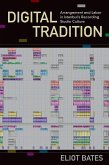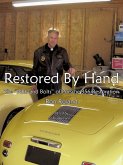
Broschiertes Buch
Cultures of Audio and Music Technologies
20. Mai 2025
MIT Press Ltd
| eBook, ePUB | 47,95 € |

Broschiertes Buch
Arrangement and Labor in Istanbul's Recording Studio Culture
29. Juni 2016
Oxford University Press
| Gebundenes Buch | 224,99 € | |
| eBook, ePUB | 14,95 € | |
| eBook, PDF | 14,95 € |
Gebundenes Buch
Arrangement and Labor in Istanbul's Recording Studio Culture
29. Juni 2016
Oxford University Press
14,95 €
Sofort per Download lieferbar
14,95 €
Sofort per Download lieferbar
Ähnliche Artikel

Broschiertes Buch
4. März 2009
Lancour Press


20,99 €
Versandfertig in 1-2 Wochen
Broschiertes Buch
Significant Events and Dates Affecting Gear Development
20. November 2014
Xlibris

Broschiertes Buch
The "Nuts and Bolts" of Porsche 356 Restoration
30. März 2010
Trafford Publishing


Broschiertes Buch
2. April 2009
Kessinger Publishing, LLC


Ähnlichkeitssuche: Fact®Finder von OMIKRON

